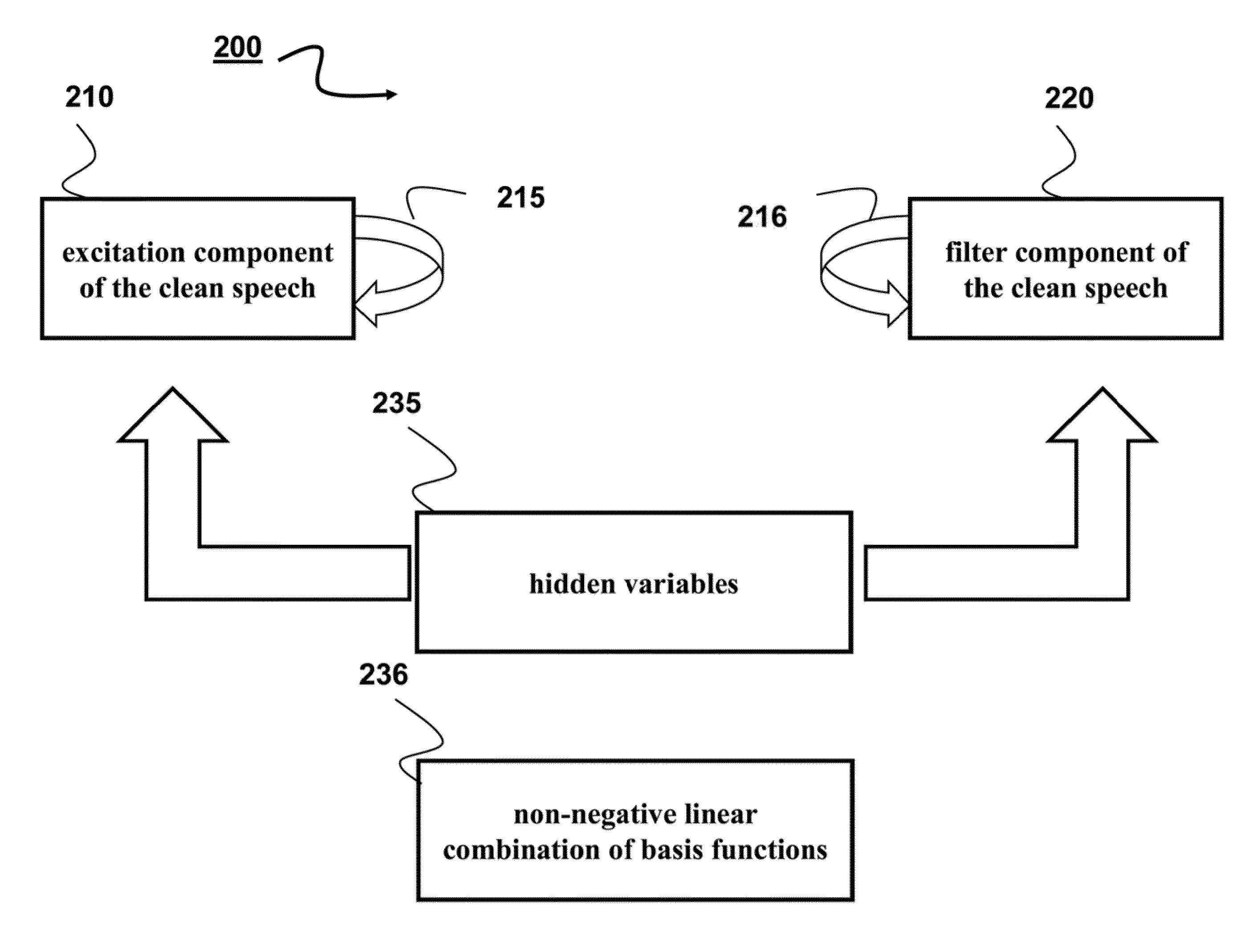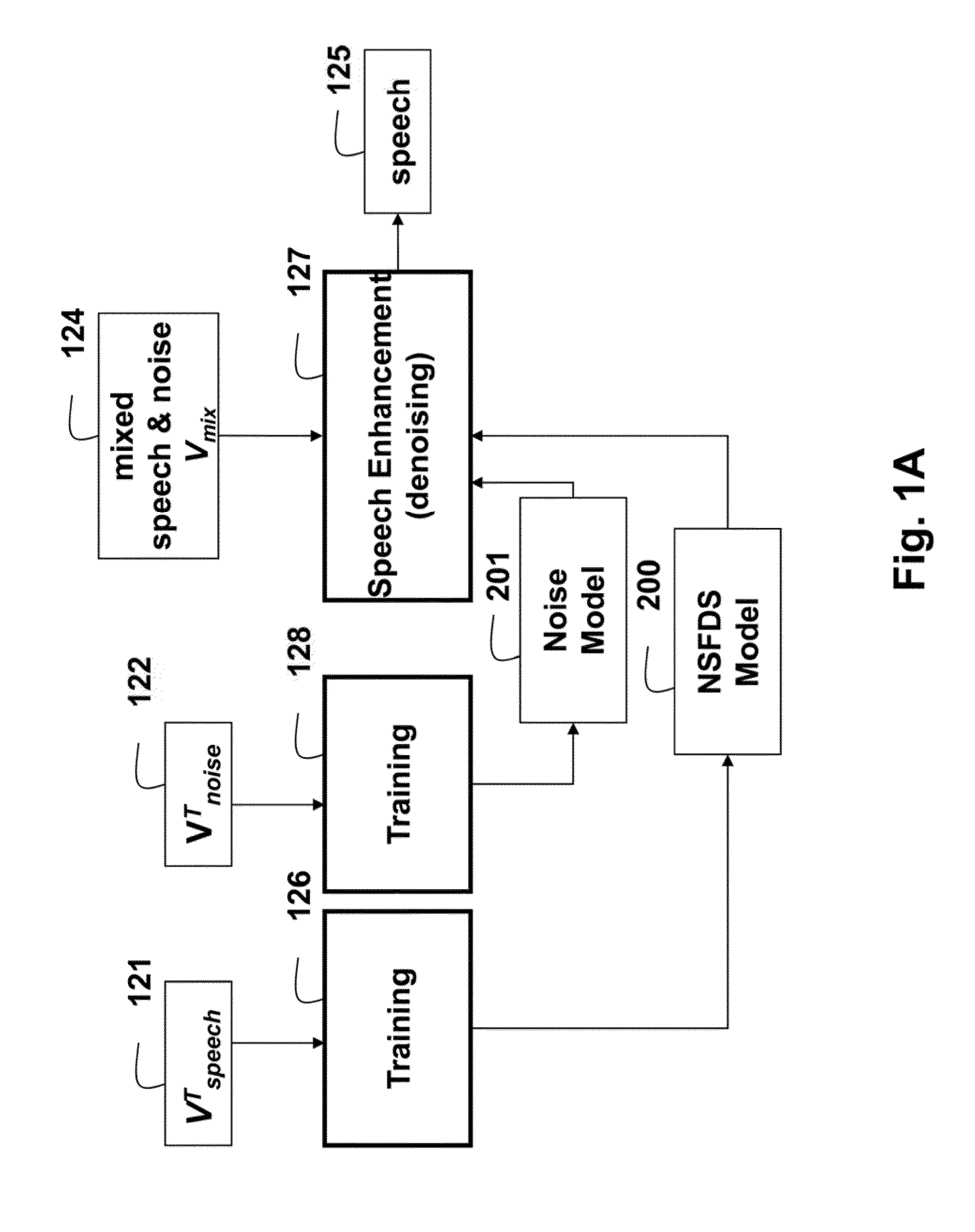Denoising noisy speech signals using probabilistic model
a probabilistic model and speech signal technology, applied in the field of processing acoustic signals, to achieve the effect of accurate and efficient modeling, computation cost, and enhancement of speech
- Summary
- Abstract
- Description
- Claims
- Application Information
AI Technical Summary
Benefits of technology
Problems solved by technology
Method used
Image
Examples
Embodiment Construction
[0026]FIG. 1A shows a general block diagram of a method for denoising a mixture of speech and noise signals according to some embodiments of the invention. The method includes one-time speech model training 126 and one-time noise model training 128 and a real-time denoising 127 parts.
[0027]Input to the one-time speech model training 126 includes a training acoustic signal (VTspeech) 121 and input to the one-time noise model training 128 includes a training noise signal (VTnoise) 122. The training signals are representative of the type of signals to be denoised, e.g., speech and non-stationary noise. Output of the training is a model 200 of the clean speech signal and a model 201 of the noise signal. In various embodiments of the invention, the model 200 is a non-negative source-filter dynamical system (NSFDS), described in more details below. The model can be stored in a memory for later use.
[0028]Input to the real-time denoising 127 includes a model 200 of the clean speech, a model...
PUM
 Login to View More
Login to View More Abstract
Description
Claims
Application Information
 Login to View More
Login to View More - R&D
- Intellectual Property
- Life Sciences
- Materials
- Tech Scout
- Unparalleled Data Quality
- Higher Quality Content
- 60% Fewer Hallucinations
Browse by: Latest US Patents, China's latest patents, Technical Efficacy Thesaurus, Application Domain, Technology Topic, Popular Technical Reports.
© 2025 PatSnap. All rights reserved.Legal|Privacy policy|Modern Slavery Act Transparency Statement|Sitemap|About US| Contact US: help@patsnap.com



